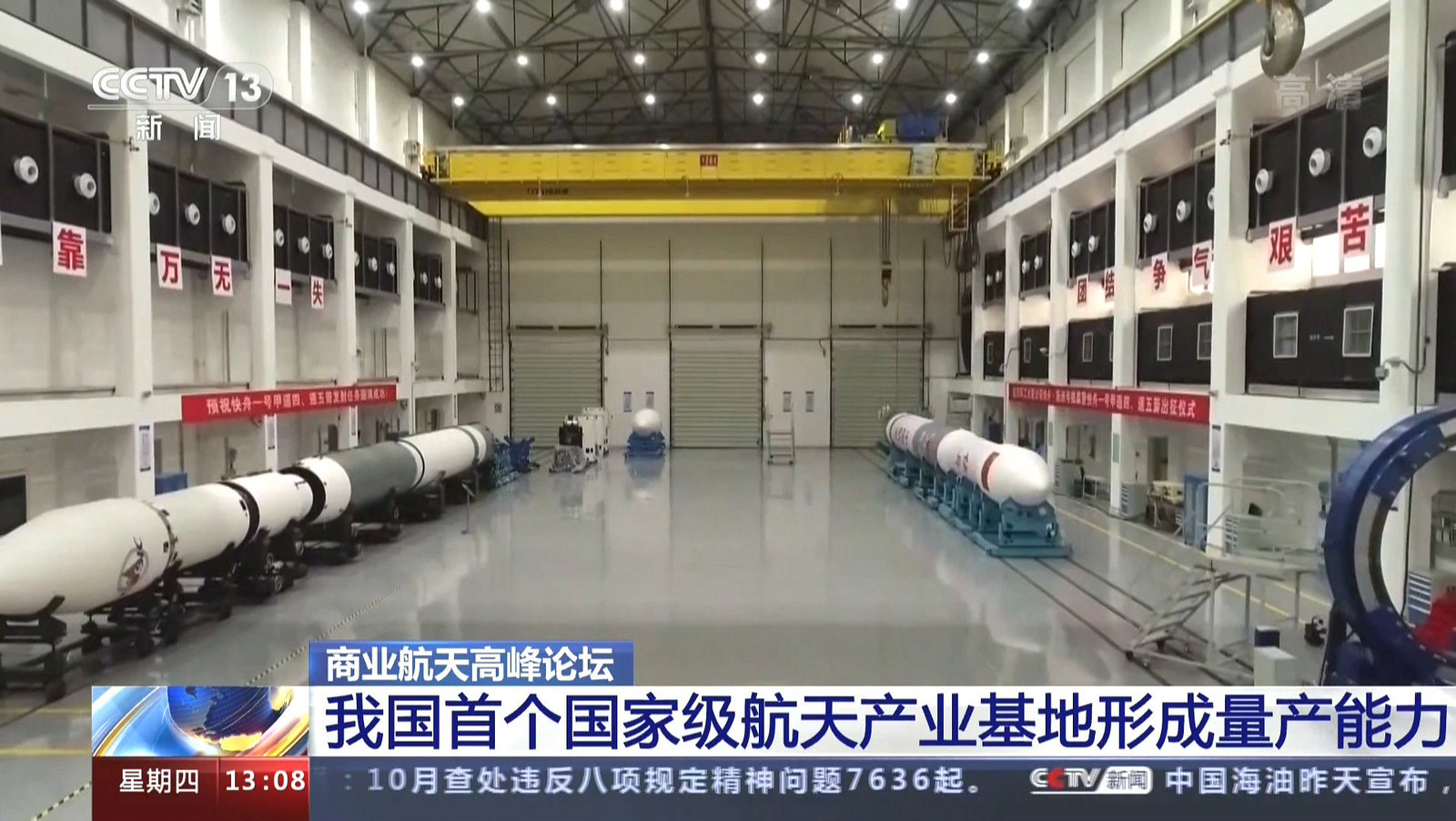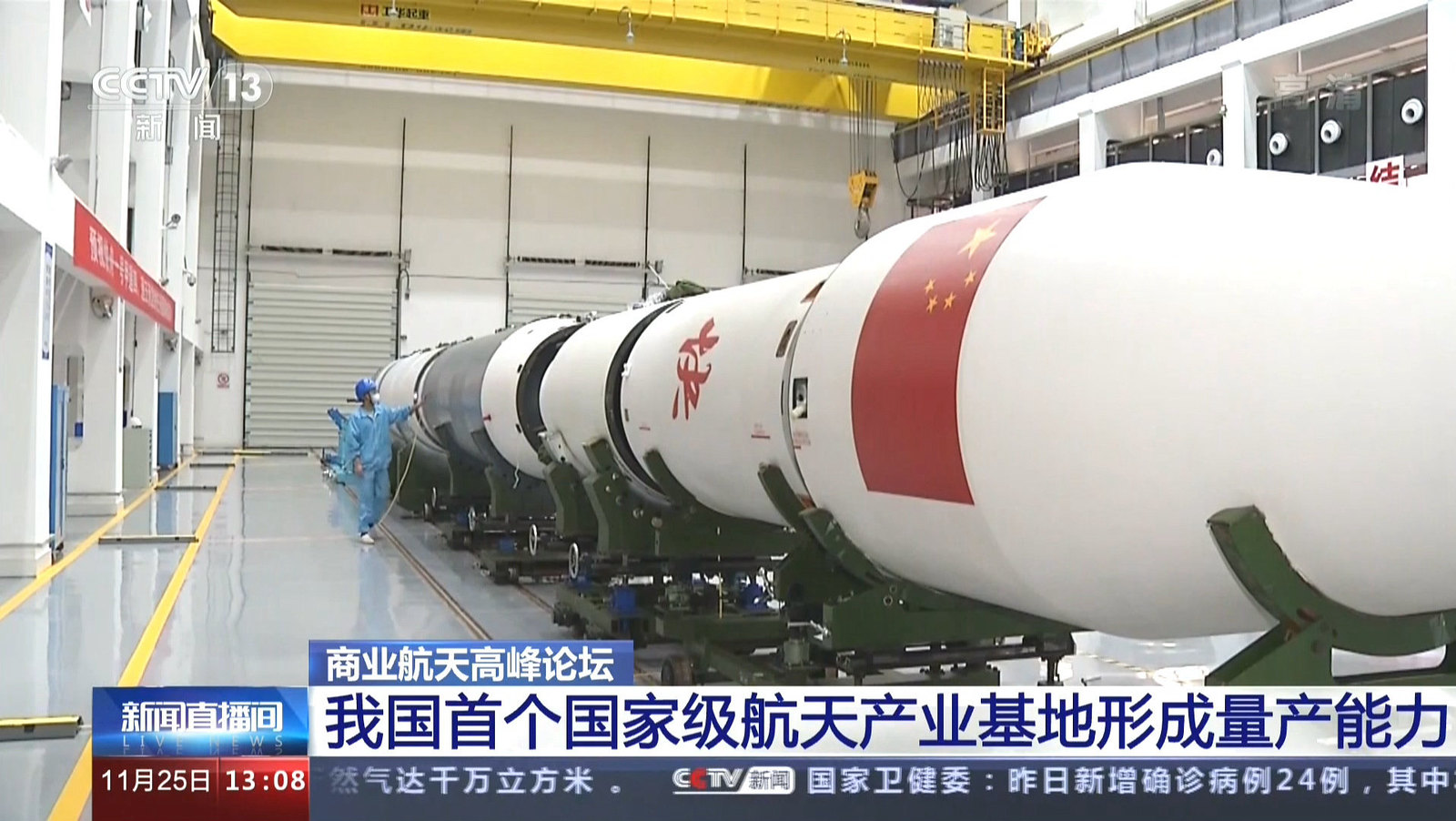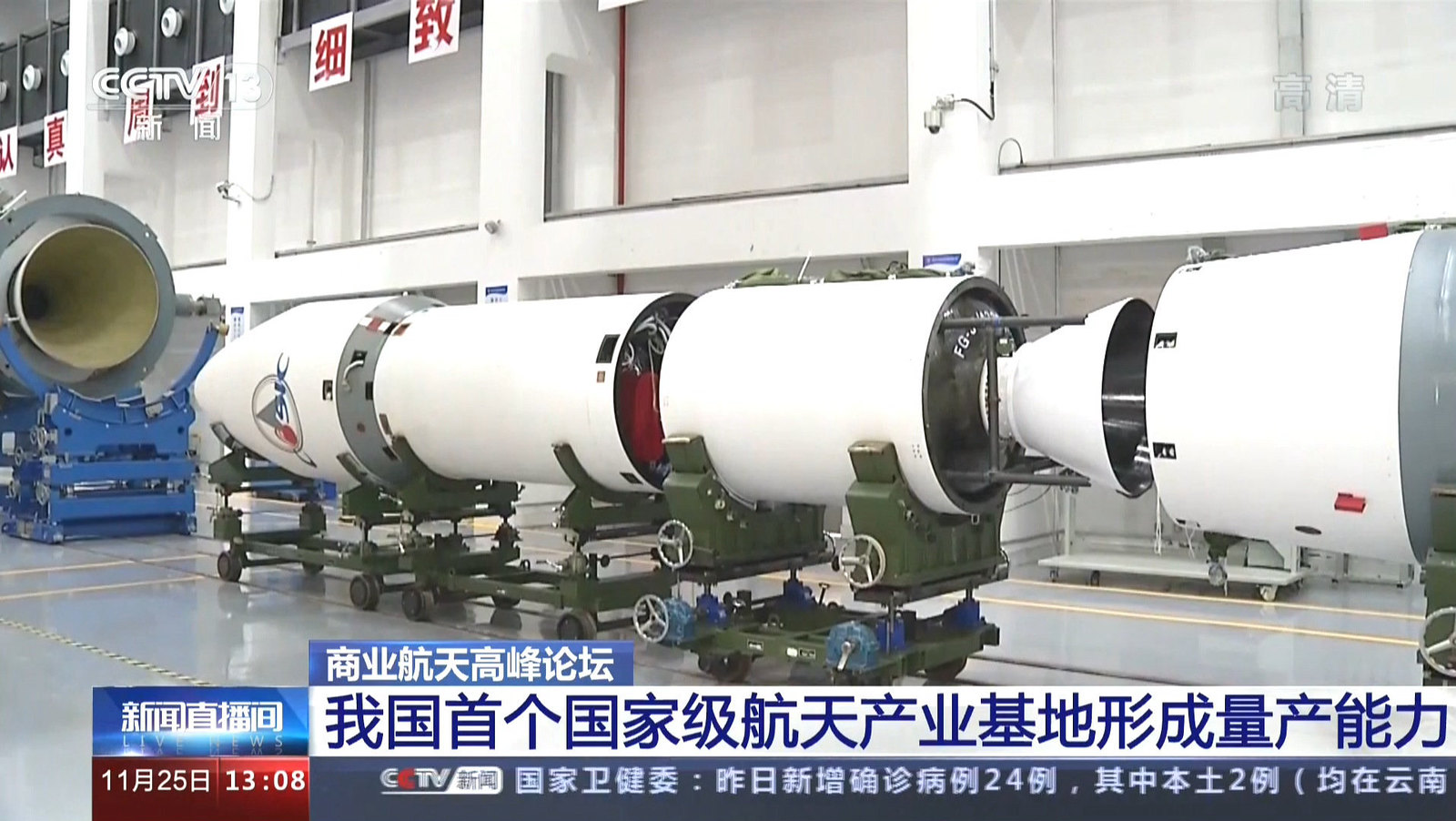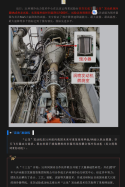You are using an out of date browser. It may not display this or other websites correctly.
You should upgrade or use an alternative browser.
You should upgrade or use an alternative browser.
China's Space Program News Thread
- Thread starter crazyinsane105
- Start date
- Status
- Not open for further replies.
Does US have something like this?CASIC confirms that China's first real-time remote sensing satellite constellation will commence construction. The constellation will have hundreds of LEO satellites covering the planet. Once finished, the constellation can obtain remote sensing data on any part of the globe within a few minutes, instead of hours or days.
Woah that's a lot of rockets. That's going to further shatter the launch record for this year + next yearThe large production base for KZ (Kuaizhou) rockets has been put into operation.





The "Yun Long" precooled jet engine made its first hot test under 5Ma environment. The enigne is design to power the reusable OSTO & TSTO vehicles in the future.
View attachment 79416
China is hedging her bet on everything, RBCC/TBCC and precooler Turbine engine....
They seem to be going with a simpler implementation then the British Sabre engine approach, simply cooling & compressing intake air to feed it to jet turbine rather then doing oxygen liquification. IMO this is much more doable, I'm very skeptical of the thermodynamic of Sabre engine.
Basically Mach 5 intake air is first compressed by inlet shockwave and slow down to M2~M3, then cool it by another 1000k to increase density 2-3 times further slowing air-flow to cool subsonic flow so that it is good enough for turbine cycle, higher compression ratio gives better efficiency as well.
Downside is top speed is below M5 while RBCC/TBCC can go much higher. Also it must use LH2 as fuel, LH2 has very low density, which kind of rule it out of military application due to short range.
I'm pretty sure SABRE engine does not do oxygen liquidation. The same people who's working on SABRE had a previous design called the LACE engine which did in fact do oxygen liquidation and failed for that exact reason. Main improvement from LACE to SABRE is that it no longer attempts to liquidify oxygen and uses an extra helium heat exchanger loop rather than run liquid hydrogen directly through the precooler.China is hedging her bet on everything, RBCC/TBCC and precooler Turbine engine....
They seem to be going with a simpler implementation then the British Sabre engine approach, simply cooling & compressing intake air to feed it to jet turbine rather then doing oxygen liquification. IMO this is much more doable, I'm very skeptical of the thermodynamic of Sabre engine.
Basically Mach 5 intake air is first compressed by inlet shockwave and slow down to M2~M3, then cool it by another 1000k to increase density 2-3 times further slowing air-flow to cool subsonic flow so that it is good enough for turbine cycle, higher compression ratio gives better efficiency as well.
Downside is top speed is below M5 while RBCC/TBCC can go much higher. Also it must use LH2 as fuel, LH2 has very low density, which kind of rule it out of military application due to short range.
What I don't understand is if the precooler is the hardest part of SABRE and they had it figured out in 2018 what's the hold up with the rest of the engine. At the slowpoke rate that they're going Yunlong might beat them to the finishing line.
I'm pretty sure SABRE engine does not do oxygen liquidation. The same people who's working on SABRE had a previous design called the LACE engine which did in fact do oxygen liquidation and failed for that exact reason. Main improvement from LACE to SABRE is that it no longer attempts to liquidify oxygen and uses an extra helium heat exchanger loop rather than run liquid hydrogen directly through the precooler.
What I don't understand is if the precooler is the hardest part of SABRE and they had it figured out in 2018 what's the hold up with the rest of the engine. At the slowpoke rate that they're going Yunlong might beat them to the finishing line.
Ah, you're right I got it mixed up.
Still Sabre's design is much more complicated having rocket mode while Yunlong is just precooler jet turbine. From the news it looked like Yunlong has the turbine engine in place as well, pretty much the whole engine is there, very likely Yunlong will beat Sabre to the finish line, then it has to compete against RBCC/TBCC.
Edit: Yunlong's testing is way ahead as well, man its nice to have money.....
Ah, you're right I got it mixed up.
Still Sabre's design is much more complicated having rocket mode while Yunlong is just precooler jet turbine. From the news it looked like Yunlong has the turbine engine in place as well, pretty much the whole engine is there, very likely Yunlong will beat Sabre to the finish line, then it has to compete against RBCC/TBCC.
Edit: Yunlong's testing is way ahead as well, man its nice to have money.....
I'm most interested in seeing how competitive they can be against the reusable SpaceX rockets
That is the benchmark to beat in terms of launch costs
WUHAN -- The China Aerospace Science and Industry Corporation Limited (CASIC) has said that it has completed the construction of an intelligent satellite production line and a rocket industrial park in the central Chinese city of Wuhan.
Located in the Wuhan National Aerospace Industry Base, both the production line and the industrial park have gone into operation, said Liu Shiquan, general manager of the CASIC. Liu announced this at the 7th China (International) Commercial Aerospace Forum that opened Thursday.
The rocket industrial park can produce 20 solid-fuel launch vehicles per year. The satellite production line has the capacity to produce 100 general satellites weighing less than one tonne a year, Liu said.
The CASIC said that it will accelerate the development and application of medium and large solid-fuelled carrier rockets.
During the 14th Five-Year Plan period (2021-2025), it is expected to carry out about 10 commercial space launch missions annually.
The CASIC will also promote the second-phase construction of the Xingyun project, China's first self-developed space-based Internet of Things constellation.
The CASIC said it is expected to develop and launch more than 12 satellites in 2022, providing customized satellite data services including emergency monitoring and weather forecasting.
- Status
- Not open for further replies.


